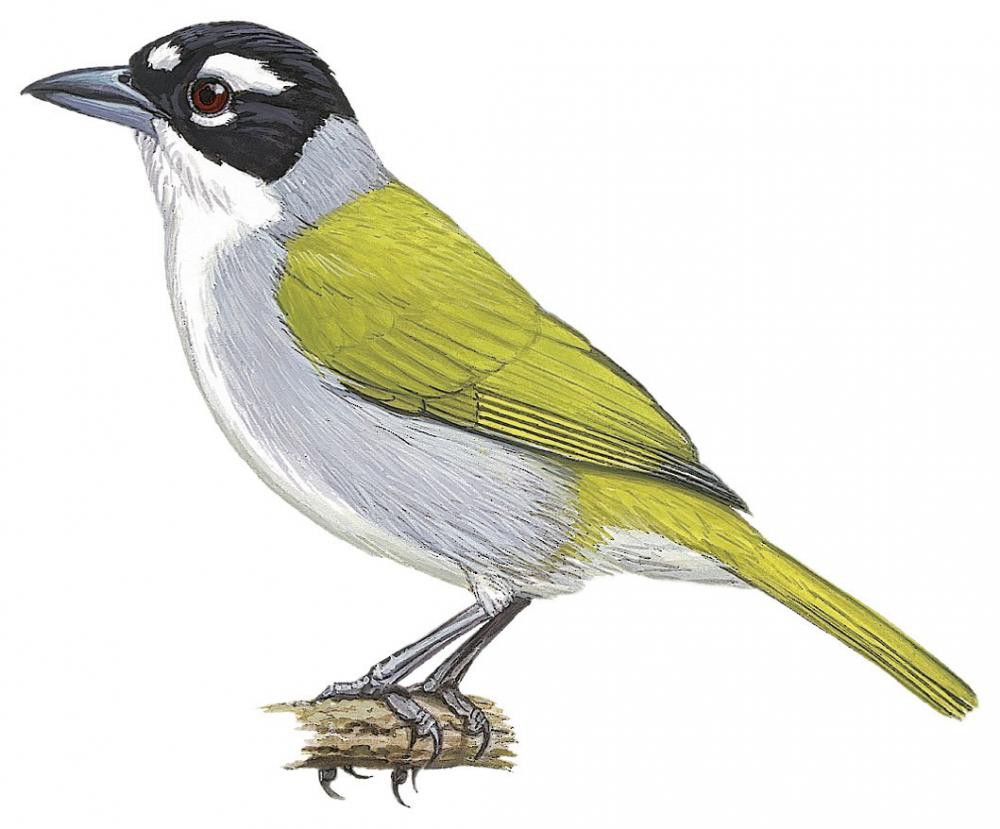Black-crowned Palm-Tanager / Phaenicophilus palmarum

Black-crowned Palm-Tanager
SCI Name:
Protonym: Turdus palmarum Syst.Nat.ed.12 ed.12 p.295
Taxonomy: Passeriformes / Phaenicophilidae / Phaenicophilus
Taxonomy Code: bcptan1
Type Locality: Cayenne ; error, Santo Domingo.
Author: Linnaeus
Publish Year: 1766
IUCN Status: Least Concern
DEFINITIONS
PHAENICOPHILUS
(Phaenicophilidae; Ϯ Black-crowned Palm Tanager P. palmarum) Gr. φοινιξ phoinix, φοινικος phoinikos palm-tree; φιλος philos lover; "The similarity of the specific names, however, induced some authors to unite the "Turdus palmarum" of Linnaeus with the Dulus palmarum of Vieillot, and the mistake was the more readily adopted, as both these birds are found in St. Domingo. A moment's glance, however, at the two birds (see their figures in Buff. Pl. Enl. 156, f. 2, and 539, f. 1.), will serve to show their completely generic distinctness. ... The "Turdus palmarum," Linn., though nearly allied to Arremon, differs in having a longer beak, and will therefore no doubt be regarded by modern systematists as generically distinct. I therefore propose for it the name of Phænicophilus, and the type will stand thus: —Phænicophilus palmarum (Linn.), Buff. Pl. Enl. Arremon palmarum, Gray. Dulus palmarum, Bon. (nec Viell.) A second species, lately indicated by the Prince of Canino, is Phænicophilus poliocephalus (Bon.)" (Strickland 1851); "Phaenicophilus Strickland, 1851, in Jardine's Contrib. Ornith., 1, p. 104. Type, by subsequent designation (G. R. Gray, 1855, Cat. Genera Subgenera Birds, p. 74), Turdus palmarum Linnaeus." (Storer in Peters 1970, XIII, 277).
Var. Phoenicophilus.
palmarum
L. palmarum of the palm trees < palma palm tree.
● ex “Palm Parrot” of Latham 1781 (Charmosyna).
● ex “Turdus viridi-olivaceus, subtus subcinereus...” of Brisson 1760 (syn. Dulus dominicus).
● ex “Merle vert de l’isle de France” of d’Aubentobn 1765-1781, pl. 648, fig. 2 (syn. Hypsipetes olivaceus).
● ex “Palmiste” and “Palmiste à teste noire” of Brisson 1760 (Phaenicophilus).
● ex "Bimbelé" or "Fausse Linotte" of de Buffon 1770-1786, and "Palm Warbler" of Latham 1783 (Setophaga).
UPPERCASE: current genus
Uppercase first letter: generic synonym
● and ● See: generic homonyms
lowercase: species and subspecies
●: early names, variants, mispellings
‡: extinct
†: type species
Gr.: ancient Greek
L.: Latin
<: derived from
syn: synonym of
/: separates historical and modern geographic names
ex: based on
TL: type locality
OD: original diagnosis (genus) or original description (species)












